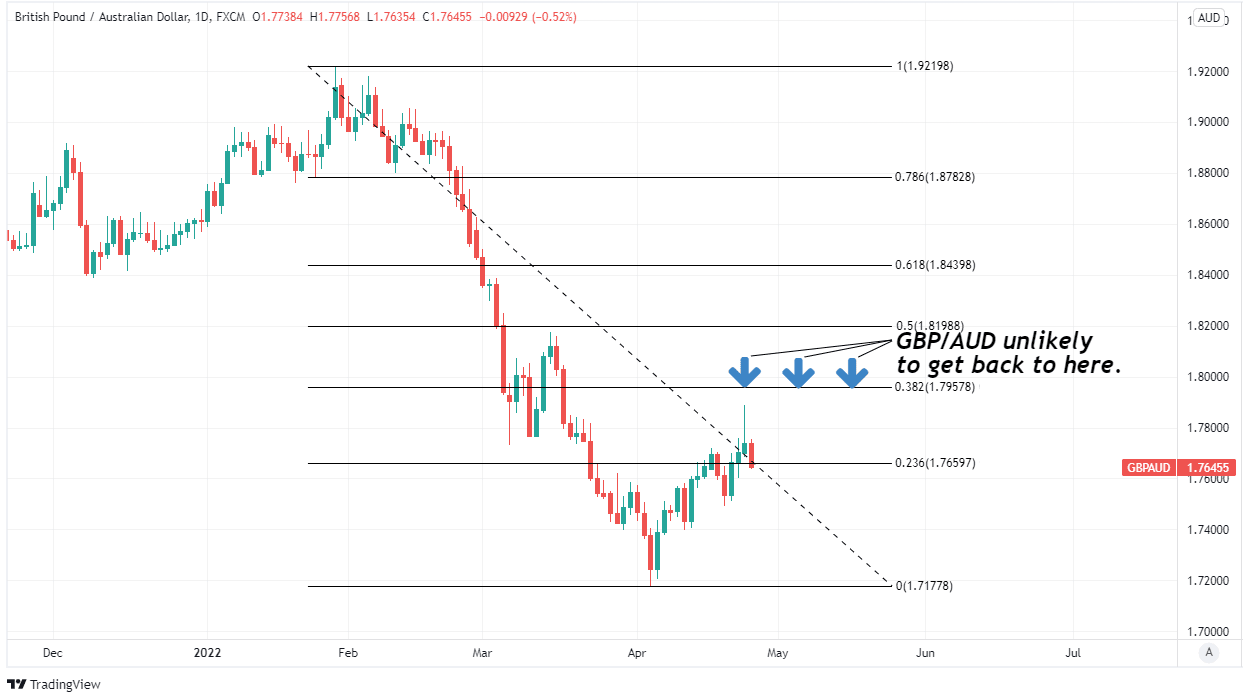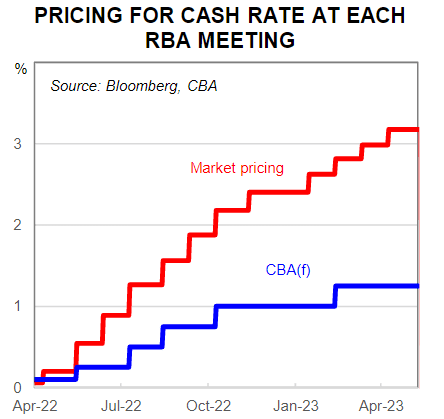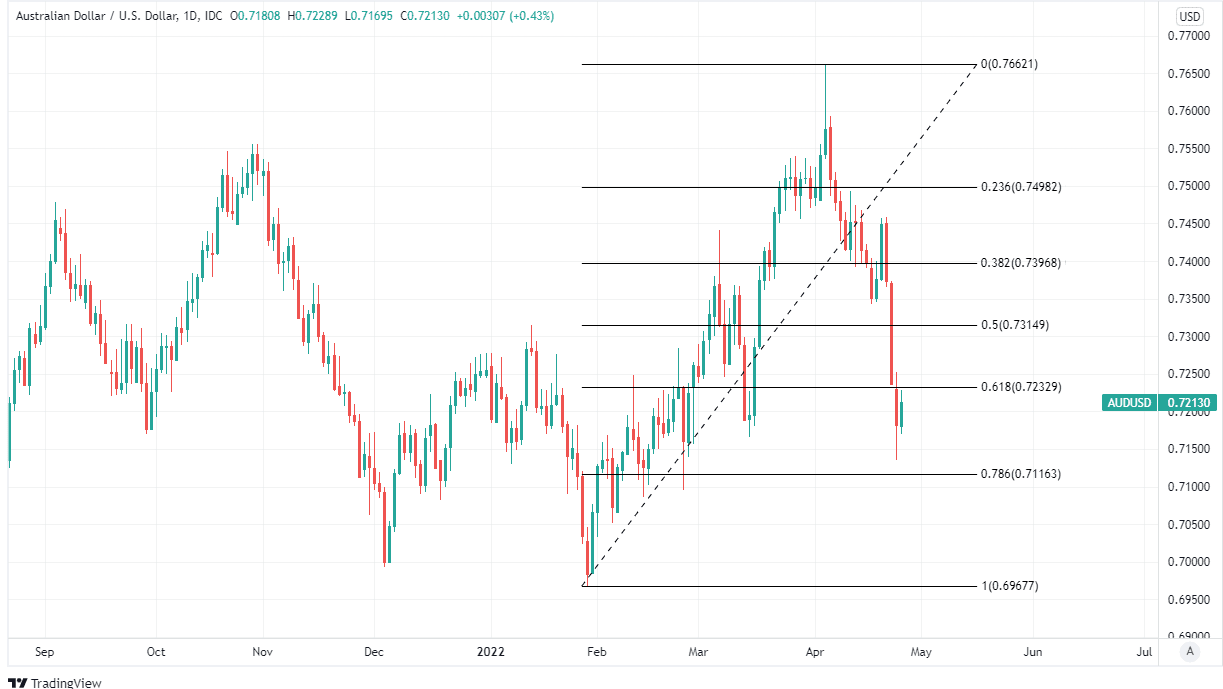GBP/AUD Rate's Recovery Fizzling with CPI and RBA Policy in Focus
- Written by: James Skinner
- GBP/AUD rebound ebbs as AUD/USD steadies
- AUD/USD stabilising with Renminbi finding feet
- AU inflation data & RBA policy impact in focus

Image © Adobe Images
The Pound to Australian Dollar exchange rate’s recent rebound has begun to fizzle out amid renewed stability in Renminbi exchange rates and as attention turns toward the release of first quarter inflation data that could impact the Reserve Bank of Australia (RBA) interest rate outlook.
Sterling had attempted to build further on what was already a hat-trick of gains over the Australian Dollar in the opening session of the week but the GBP/AUD rebound fizzled late on Monday and was followed on Tuesday by an outright decline for the Pound.
Pound to Australian Dollar rate losses came alongside a tentative rebound in the influential AUD/USD exchange rate, which was stabilising alongside the Renminbi on Tuesday after the People’s Bank of China (PBoC) announced an action that could slow the Chinese currency’s recent depreciation.
"A period of calm in USD/CNY would also be a sign for us to buy AUD and NZD. Both are vulnerable to protracted Chinese economic weakness, but a lot of that is priced in and monetary policy normalisation is more important, while the boost from an eventual re-acceleration of Chinese growth can't be forgotten. However long it takes for current Covid policies to work, they are still temporary," says Kit Juckes, chief FX strategist at Societe Generale.
Above: Pound to Australian Dollar rate shown at daily intervals with Fibonacci retracements of late January decline indicating possible areas of short-term technical resistance to any further recovery by Sterling. Click image for closer inspection.
Compare GBP to AUD Exchange Rates
Find out how much you could save on your pound to Australian dollar transfer
Potential saving vs high street banks:
A$48.75
Free • No obligation • Takes 2 minutes
Australia’s Dollar had slumped alongside many other currencies last week as the Renminbi fell abruptly in price action that lifted the USD/CNH exchange rate to 6.60 by Monday, at which point the PBoC announced a cut to its Required Reserve Ratio for commercial banks' foreign currency deposits.
“The RMB has declined because the PBoC has allowed the currency to respond to a shift in balance of payments flows. This includes a possible deterioration in the trade position in April as well as securities outflows. The RMB is also catching up with prior weakness in currencies which comprise around 40% of the trade-weighted basket (i.e. EUR, JPY, and KRW),” says Stephen Gallo, European head of FX strategy at BMO Capital Markets.
Increases in the ratio have previously been used to push back against currency appreciation so Monday’s cut from 9% to 8% may be a signal that the recent depreciation against the Dollar is close to having run its course.
The Renminbi edged higher against the Dollar for the first time since Tuesday,19 April, on Wednesday while the AUD/USD exchange rate climbed back to the 0.72 level as market attention turned to Wednesday’s release of Australia’s first quarter inflation report. (Set your FX rate alert here).
Source: Commonwealth Bank of Australia. Click image for closer inspection.
"The Q1 2022 CPI will make or break the case for the Reserve Bank of Australia (RBA) to start increasing the cash rate soon," says Kristina Clifton, a senior economist and currency strategist at Commonwealth Bank of Australia.
“A strong CPI will not alter much the already aggressive rate hike cycle and not add much upside to AUD/USD. A soft CPI will pull out some rate hikes, and pull AUD/USD down. AUD/USD could fall closer to 0.7000 this week," CBA’s Clifton and colleagues said on Tuesday.
Wednesday’s inflation data will be an important indicator of whether financial markets have been right to wager with increasing confidence during recent weeks that the RBA could be likely to lift its benchmark cash rate for the first time since before the pandemic next month.
Pricing in the overnight-indexed-swap market implied on Tuesday that investors already widely expect the RBA to lift its cash rate from 0.1% to 0.25% on May 03 ahead of a further anticipated uplift to 0.5% on June 07, hence why the CBA team see the move offering little if any upside to the Aussie.
Above: AUD/USD shown at daily intervals with Fibonacci retracements February rally indicating possible short-term areas of technical support. Click image for closer inspection.
Compare GBP to AUD Exchange Rates
Find out how much you could save on your pound to Australian dollar transfer
Potential saving vs high street banks:
A$48.75
Free • No obligation • Takes 2 minutes
“We tend to see weakness below 0.71/ 0.72 as an opportunity to buy dips,” says Robert Rennie, head of financial market strategy at Westpac, who looks for AUD/USD to recover “towards the 0.77 to 0.78 region” later in 2022.
RBA guidance has been shifting over recent quarters and increasingly so in 2022 while most recently the bank acknowledged in minutes of its April policy meeting that Australian inflation developments and other factors “have brought forward the likely timing of the first increase in interest rates.”
Australian inflation pressures have remained subdued relative to those seen in other comparable economies, echoing the RBA’s pre-pandemic experience and explaining why the bank had been cutting its cash rate already long before the coronavirus came along in the early months of 2020.
“A key uncertainty over the medium-term related to how higher nominal wages would respond to higher inflation and the decline in real purchasing power,” the RBA said of the inflation outlook in minutes of its April meeting.
“Given the tightness of the labour market, a further strengthening of aggregate wages growth and broader measures of labour costs was expected. The pick-up was still expected to be only gradual,” the minutes also said.







